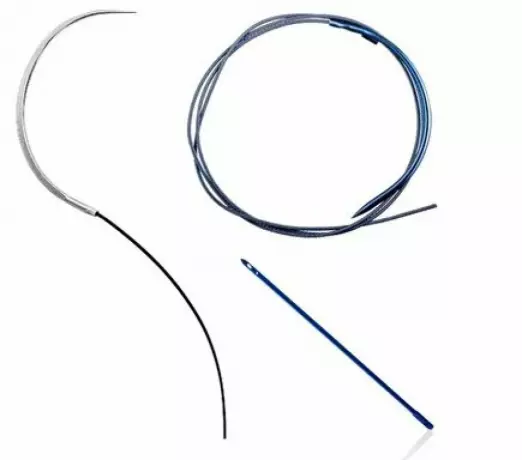
Тitanell® – is a surgical suture made of titanium microfilament. This is a material with e...
Portal and digital medical technology fair of the largest MedTech cluster in Germany

In the computer industry, the term "threading" can mean several different things. A thread can be a single process that carries out a single task. It can also refer to an ongoing communication process. Regardless of the type of process, it is classified as a "thread" by management. In some instances, a single process can take up the task of another, while others may take up a variety of tasks at once.
A smart thread is an implantable device that connects to a smartphone or other medical devices. The thread can monitor a person's glucose level, detect infections, and alert hospital staff if a patient's body chemistry is out of balance. Researchers at Tufts University have embedded nano-scale sensors in a surgical thread. Scientists at the University of California-Berkeley have developed color-changing smart threads that display information through the use of visible light.
A smart thread is an implantable medical device that connects to a smartphone or other medical devices. It can report information on glucose levels, diagnose infection, and alert medical staff if a patient's body is out of balance. One research group at Tufts University has created a surgical thread with embedded nano-scale sensors, while researchers at the University of California-Berkeley are developing color-changing smart threads. Non-surgical threads are coated with thermochromic paint that can serve as discrete components in visual alert systems.
The first smart thread was developed by Dr. Yves Heilig, a physician at the Natural Doctor training program in Germany. In 2008, he founded a training center that offers different medical courses. The second smart thread was developed in 2017, and was developed by researchers at the University of California-Berkeley. Moreover, the first trainer for the BIJOU Thread was also created by Dr. Yves Heilig.
Threads are a medical device that can be used in facelifts, neck lifts, and brow lifts. The procedure works by using thin absorbable sutures to restore the skin's natural contour and rejuvenate sagging tissues. While it is important to be aware of potential complications and side effects, the procedure is safe and effective. There are no complications with this treatment. It will last for up to two years and will not require any invasive surgery.
The Threads Lift procedure is a minimally invasive procedure that can be performed anywhere on the body. This procedure is approved by the FDA for moderate to severe folds and wrinkles. A patient can have the treatment done in one session and still see results within a few days. However, the cost of a Threads Lift procedure varies from person to person. There are many benefits associated with this non-surgical cosmetic surgery. It can help you achieve a youthful appearance and improve self-confidence.
In addition to facelifts, Threads Lifts can also be used in the neck and brow. The procedure uses thin, absorbable sutures that mimic the skin's natural contour. In some cases, it will require a few sessions to see the full effect. Aside from these benefits, there are risks involved with this procedure. In the end, though, Threads Lifts are a great alternative to traditional surgical procedures. You will look younger and feel better after the procedure.
A Thread is a part of a process. It shares memory with the rest of the process. In contrast, Threads are a subset of a larger process. Unlike processes, they can communicate with each other much more easily, making them more susceptible to problems that can arise from other threads within a single process. But the advantages of Threads far outweigh the disadvantages. These advantages are what most people seek in a thread.
A Thread is a subset of a process. It shares the same memory with other threads in the same process. The threads can exchange data and information with each other more easily than processes, making them more complex than each other. In contrast, threads share a stack of data. They can be created and managed separately. The main difference between a process and a thread is that they are essentially the same thing. The main difference between the two is that they share memory and data.
The thread is the flow of execution through a process. Its name is a thread, which is a segment of a process. It has its own system registers and program counter. A thread shares only a small amount of information with its peers. The thread, in contrast, is not a thread. It can only execute on a single process. The same is true for a thread. Its purpose is to maximize a computer's resources.
Become a digital exhibitor yourself in the online portal of the largest and best-known MedTech cluster region in Germany and inform the world of medical technology about your products and services as well as about news, events and career opportunities.
With an attractive online profile, we will help you to present yourself professionally on our portal as well as on Google and on social media.